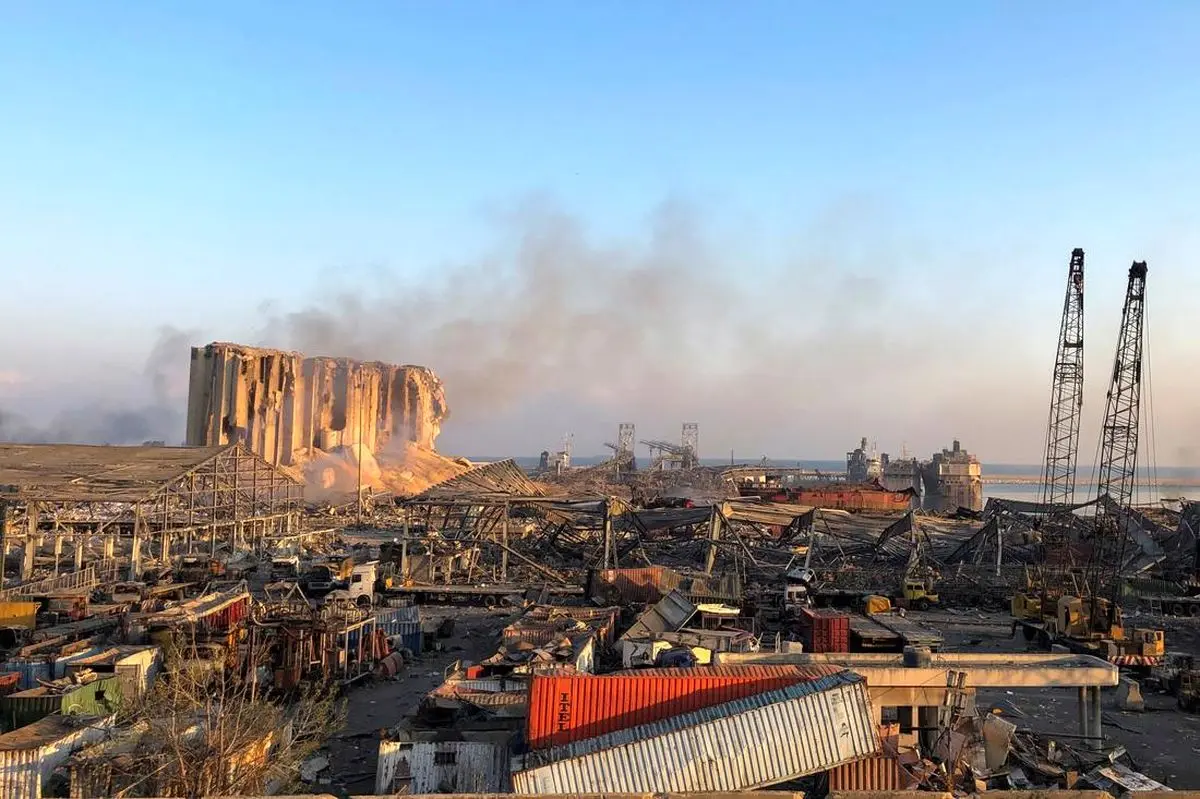Toll expected to rise in blast that shook Beirut, killing 78 and injuring thousands

Lebanese rescue workers dug through the rubble looking for survivors of a powerful warehouse explosion that shook the capital Beirut, killing 78 people and injuring nearly 4,000 in a toll that officials expected to rise.
Tuesday’s blast at port warehouses storing highly explosive material was the most powerful in years in Beirut, already reeling from an economic crisis and a surge in coronavirus infections.
President Michel Aoun said that 2,750 tonnes of ammonium nitrate, used in fertilisers and bombs, had been stored for six years at the port without safety measures, and he said that was “unacceptable”.
He called for an emergency cabinet meeting on Wednesday.
Officials did not say what caused the blaze that set off the blast. A security source and local media said it was started by welding work being carried out on a hole in the warehouse.
“What we are witnessing is a huge catastrophe,” the head of Lebanon’s Red Cross George Kettani told broadcaster Mayadeen. “There are victims and casualties everywhere.”
Hours after the blast, which struck shortly after 6 p.m. (1500 GMT), a fire still blazed in the port district, casting an orange glow across the night sky as helicopters hovered and ambulance sirens sounded across the capital.
The blast revived memories of a 1975-90 civil war and its aftermath, when Lebanese endured heavy shelling, car bombings and Israeli air raids. Some residents thought an earthquake had struck.
“The blast blew me off metres away. I was in a daze and was all covered in blood. It brought back the vision of another explosion I witnessed against the U.S. embassy in 1983,” said Huda Baroudi, a Beirut designer.
Prime Minister Hassan Diab promised there would be accountability for the deadly blast at the “dangerous warehouse”, adding “those responsible will pay the price.”
The U.S. embassy in Beirut warned residents about reports of toxic gases released by the blast, urging people to stay indoors and wear masks if available.
MANY MISSING
“There are many people missing. People are asking the emergency department about their loved ones and it is difficult to search at night because there is no electricity,” Health Minister Hamad Hasan told Reuters.
Hasan said 78 people were killed and nearly 4,000 injured.
Footage of the explosion shared by residents on social media showed a column of smoke rising from the port, followed by an enormous blast, sending a white cloud and a fireball into the sky. Those filming the incident from high buildings 2 km (one mile) from the port were thrown backwards by the shock.
Bleeding people were seen running and shouting for help in clouds of smoke and dust in streets littered with damaged buildings, flying debris, and wrecked cars and furniture.
The explosion occurred three days before a U.N.-backed court is due to deliver a verdict in the trial of four suspects from the Shi’ite Muslim group Hezbollah over a 2005 bombing which killed former Prime Minister Rafik al-Hariri and 21 others.
Hariri was killed by a huge truck bomb on the same waterfront, about 2 km (about one mile) from the port.
Israeli officials said Israel, which has fought several wars with Lebanon, had nothing to do with Tuesday’s blast and said their country was ready to give humanitarian and medical assistance. Shi’ite Iran, the main backer of Hezbollah, also offered support, as did Tehran’s regional rival Saudi Arabia, a leading Sunni power.
At a White House briefing, U.S. President Donald Trump indicated that the explosion was a possible attack, but two U.S. officials, speaking on condition of anonymity, said initial information contradicted Trump’s view.
END
